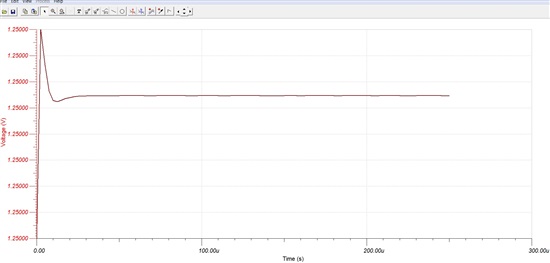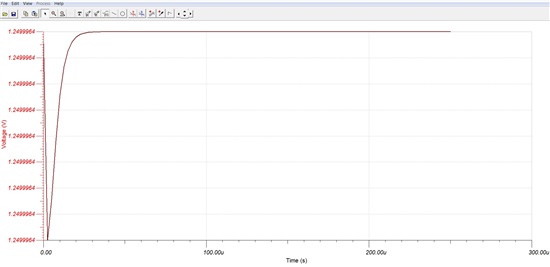Hello,
I am running a simple transient test for checking overshoot and stability with OPA2188 driving a capacitive load.
The reason for that is OPA2188 will be buffering a 1.25 V as input reference for INA330, and datasheet of INA330 asks for a 0.1uF cap.
So here is the circuit:
Now, when I use a load (R1) greater than 250Mohms, curve goes ok, like this:
But if I use a load lower than 200Mohms, down to 50Mohms (give or take) a weird dip happens:
At 1Mohms curve goes back to "normal" overshoot.
Other input voltages also made output curve switch like this.
What am I missing??




